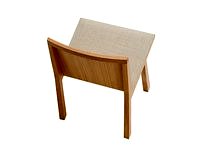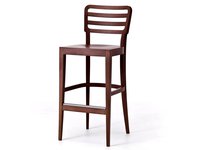005
004
Billiani has been making chairs in Italy for well over a
hundred years. The company is located in Manzano, in the
heart of a district that has built its fortune based on chair
manufacturing and which still boasts one of the world’s unique
production hubs.
This culture is embedded in Billiani seating, as a storyteller.
The sign is the ability to work wood, which is expressed
through an aesthetic made of curves, joints and turnings
rather than words. The story is the tradition that Billiani
grafted onto in 1911, going through different ages, without fear
of changing, before arriving at today’s age of design.
Billiani nasce nel 1911 quando Luigi, falegname
originario della Carnia, e la moglie Delina, figlia
di un seggiolaio di Mariano, aprono un piccolo
opificio a Manzano. Tra Manzano e Mariano ci
sono poco più di dieci chilometri e un confine:
quello che separa l’Impero austroungarico dal
Regno d’Italia. L’impresa, che produce sedie in
legno curvate e impagliate, è a conduzione fa-
miliare. Sono gli anni in cui inizia a prendere
forma quello che nel secondo dopoguerra di-
venterà il distretto della sedia: saranno i figli di
Luigi — i fratelli Ottone, Orlando, Lino e Bruno
— a vivere da protagonisti gli anni del boom.
Nel 1986 entra in azienda la terza generazione
e Billiani diventa sinonimo di sedute per grandi
commesse, soprattutto all’estero. Alla fine de-
gli anni Novanta Luigi Billiani, che ha lo stesso
nome del nonno e una formazione da architet-
to, decide di intraprendere la strada del design
e insieme alla moglie Veronik Romanutti crea la
Billiani di oggi.
Billiani started up in 1911 when Luigi,
a carpenter originally from Carnia, and his wife Delina,
daughter of a chair maker from Mariano, opened a small
factory in Manzano. Between Manzano and Mariano there
were just over ten kilometres as well as a border: the one that
separated the Austro-Hungarian Empire from the Kingdom
of Italy. The company, which produced curved and wicker
wooden chairs, was family-run. These were the years in which
what was to become the chair district began to take shape
after the Second World War: Luigi’s children — the brothers
Ottone, Orlando, Lino and Bruno — would experience the
boom years as major players. In 1986 the third generation
joined the company and Billiani became synonymous with
seating for large orders, destined especially abroad. At the
end of the nineties Luigi Billiani, who has the same name as
his grandfather and had trained as an architect, decided to
go down the design path and, together with his wife Veronik
Romanutti, created the Billiani of today.
Storia ⁄ History
Billiani 1911
005
004
L’archetipo è la sedia, il materiale d’elezione il legno. E poi c’è tutto
il resto: imbottiti, tavoli e complementi. Metallo, tessuti e materiali
pregiati. Billiani è un’impresa che crede nel made in Italy e nel design:
i suoi prodotti, pensati insieme a designer italiani e internazionali,
sono espressione di un patrimonio culturale condiviso, oltre che una
storia di famiglia. Billiani si trova a Manzano, nel cuore di un distretto
che sulla sedia ha costruito la sua fortuna, un territorio di piccoli
laboratori e aziende artigiane che portano avanti una patrimonio
secolare di conoscenza.
The archetype is the chair, the material of choice is wood.
And then there is everything else: upholstered items, tables
and accessories. Metal, fabrics and precious materials.







